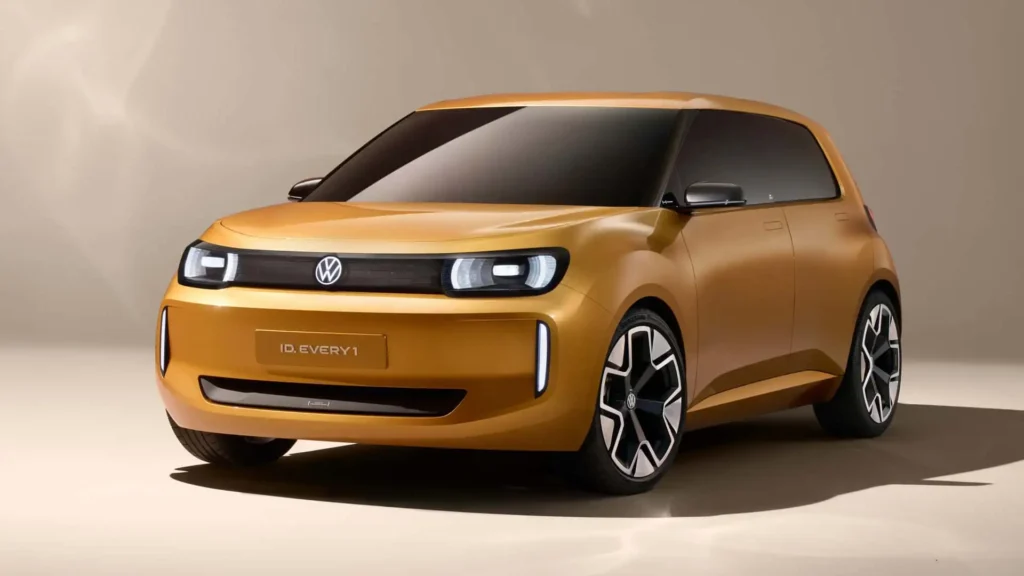
Photo: Volkswagen
Volkswagen just revealed a concept car that could finally solve the electric vehicle industry’s biggest achilles heel: price.
The adorably-named “ID.Every1” showcases VW’s upcoming entry-level electric car, expected to cost around $21,300 when it reaches production.
This matters hugely — and not just for VW.
For years, I’ve been watching automakers unveil stunning EV concepts with exciting range and features.
Probably you have too. So, what do we notice next?
The price tag: $45,000… $60,000… $80,000+.
Excitement level plummets.
The industry has been building electric cars for people who can already afford anything, while completely ignoring the vast majority of car buyers who NEED affordable transportation.
This has created a dangerous market disconnect that I call “champagne innovation for beer budgets.”
Many consumers desperately want the benefits of electric vehicles, but simply cannot afford the current offerings, much less the cost of making their lives EV-ready.
See more pics of the ID.Every1
VW’s strategy is something I talk about in I Need That — creating products that align with buyers’ deeply held beliefs (like ever-rising environmental concerns) AND their financial realities.
When a product connects these dots, the “flip” from want to need becomes possible for massive new segments.
At 152.7 inches (12.73 feet) long, the ID.Every1 is a fair bit smaller than most American cars, yet larger than VW’s previous electric entry, the now-discontinued (i.e. failed) e-up! It’s designed specifically to make electric mobility accessible to virtually everyone who can afford to drive.
Kind of what Volkswagen was created to be. The brand name literally means “the people’s car.”
What’s cool is that VW isn’t just creating one affordable option, but two — the ID.Every1 at around $21,300 and the slightly larger ID.2 at approximately $26,700. This creates a stepped approach to reaching different budget levels. (Multi-level choices are also a winning pricing strategy.)
Product Payoff: The Dacia Spring electric car applied this same principle in Europe, launching at €16,990 (around $18,000) in 2021 to become the continent’s most affordable EV. Despite being a simple vehicle with modest range, it sold over 140,000 units in its first two years — proving that price accessibility can drive adoption far more effectively than premium features for many consumers.
Action for today: Evaluate your product’s accessibility across different customer segments. Are you creating “champagne solutions” for “beer budgets”? Consider how you might create stepped entry points that maintain your core value while making it accessible to broader markets. (And sell at higher margins to those who’ll pay for it!)
Want to discuss strategies for expanding your product’s market reach? Tap that reply arrow and let’s chat about how stepped pricing or feature sets might open new customer segments. Or reach out to my team of product strategists at Graphos Product.
